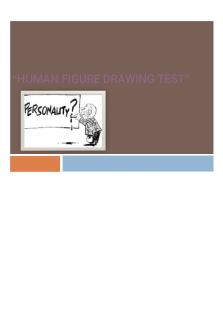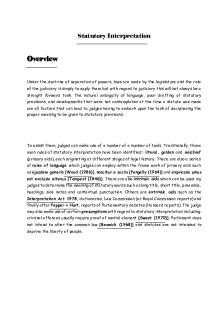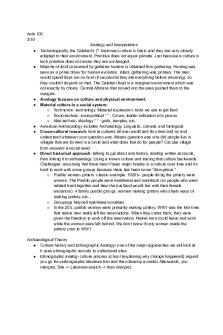Example paper-Genogram and Interpretation PDF

| Title | Example paper-Genogram and Interpretation |
|---|---|
| Course | Genetics |
| Institution | Nova Southeastern University |
| Pages | 5 |
| File Size | 97.4 KB |
| File Type | |
| Total Downloads | 57 |
| Total Views | 140 |
Summary
example paper...
Description
Running head: GENOGRAM
1
Genogram and Interpretation XXXXXXXXXXXXX Nova Southeastern University
GENOGRAM
2 Genogram and Interpretation
The patient’s personal and family history, in addition to physical assessment, help to guide the healthcare provider’s decisions regarding choice of treatment regimen and methods of preventative care. A genogram is a graphic illustration of one’s family history that helps the nurse to identify individual and family risks for specific disorders (Beery & Workman, 2012). This narrative serves to interpret the patient’s genogram, discusses patterns of disease, opportunities for patient education, risk classification, factors complicating interpretation, and identification of areas where more information is needed. Patterns of Disease The health patterns of three generations of A. B.’s maternal history identified as Family A, in addition to the health patterns of three generations of paternal history identified as Family B were expressed in the genogram. Recurrent themes of depression occurred in the maternal health history and cancer in the paternal health history. A. B.’s paternal family history revealed a 40% incidence of known cancer. A.B. was diagnosed with breast cancer. The paternal grandmother, M. B. died in her 70s of colon cancer. Three of her sons identified as C. D., E. D., and F. G. were diagnosed with prostate cancer. In addition to this, several maternal family members have been diagnosed with major depressive disorder. Scientists have attributed major depressive disorder to both genetic and environmental factors (Breen et al., 2011). Breen et al. (2011) performed a study on 839 families consisting of 971 siblings with severe depression. The study found a common genetic link in affected families. (Breen et al., 2011). Depression is expressed in varying degrees among maternal family members, ranging from mild to severe. The genogram demonstrates reduced penetrance of depressive disorders below 100%. The p arm of chromosome three has been identified in a genome-wide association
GENOGRAM
3
study (GWAS) as a contributing factor to familial depression although more studies are warranted (Breen et al., 2011). Thirty-percent of maternal family members have either been hospitalized two or more times for major depressive episodes or have received therapeutic and pharmacological treatment for depression. U. N., a maternal uncle, his son, and a cousin were diagnosed with schizophrenia. The maternal grandmother F. B. and her daughter G. R were diagnosed with diabetes. Opportunities for Patient Education & Risk Classification Depression, cancer, mental illness, and alcoholism are recurrent health themes identified in A. B.’s pedigree. Patient reported testing negative for the BRCA1 gene, which is used to identify genetic inheritance of breast cancer (A. B., personal communication, April 06, 2014). In order to minimize risk of depression resulting from environmental factors, it is important to educate A. B. regarding stress and healthy lifestyle. It was reported that the severity of depressive episodes was increased among family members living in high stress environments (B.C., personal communication, April 06, 2014). Family members living in stable environments with supportive partners or spouses revealed decreased episodes of depressive events (B. C., personal communication, April 06, 2014). Low stress environment, stress management, and adequate nutrition is crucial in the management and prevention of depression (Harbottle, 2011). Healthy lifestyle choices such as exercise, well balance diet, smoking cessation, and moderate alcohol use are necessary in the prevention and management of cancer, heart disease, hypertension, and diabetes type II (Hinkle & Cheever, 2014). Factors Complicating Interpretation & Gaps in Information As a result of the aging process, increasing numbers of family members may be diagnosed with chronic disease. A. B.’s maternal family history revealed cancer in the elder
GENOGRAM
4
members of the siblings of maternal grandparents at age 70 and above. Other unidentified affected members may manifest chronic disease in later years. Other factors complicating interpretation of the genogram include inaccurate information or the withholding of health information due to privacy concerns, and shame or embarrassment. Gaps in the family health history include the unknown medical history of the paternal grandfather, his grandchildren and that of a maternal aunt and her children. Conclusion Overall, this genogram provided a pictorial view of A. B.’s family health history and helped to identify the major risk factors of depression and cancer. Age, environmental concerns, and genetics may also increase risks for chronic disease such as depression, cancer, hypertension and heart disease. It is important for the patient to update family health history as new information is provided. In order to maintain health, it is also crucial for the patient to maintain a low stress environment, pursue a healthy lifestyle, and seek health maintenance through routine health screenings, physical examinations, and breast screenings.
GENOGRAM
5
References Berry, T. A., & Workman M. L. (2012). Genetics and genomics in nursing and healthcare. Philadelphia, PA: F. A. Davis Company. Breen, G., Webb, B. T., Butler, A. W., Van den Oord, E., Tozzi, F., Craddock, N., … McGuffin, P. (2011). A genome-wide significant linkage for severe depression on chromosome 3: The depression network study. The American Journal of Psychiatry 168(8), 840-847. doi: 10.1176/appi.ajp.2011.10091342 Harbottle, L. (2011). Nutrition and mental health: The importance of diet in depression. British Journal of Wellbeing, 2(7), 19-22. Hinkle, J. (2014). Textbook of medical-surgical nursing. Philadelphia, PA: Lippincott Williams & Wilkins....
Similar Free PDFs

Example Gauss and example
- 1 Pages

Bode Plots and Interpretation
- 2 Pages

PFD structure and example
- 3 Pages

Example problems and solutions
- 142 Pages

HFD Interpretation
- 42 Pages

Statutory Interpretation
- 5 Pages

Statutory Interpretation
- 11 Pages
Popular Institutions
- Tinajero National High School - Annex
- Politeknik Caltex Riau
- Yokohama City University
- SGT University
- University of Al-Qadisiyah
- Divine Word College of Vigan
- Techniek College Rotterdam
- Universidade de Santiago
- Universiti Teknologi MARA Cawangan Johor Kampus Pasir Gudang
- Poltekkes Kemenkes Yogyakarta
- Baguio City National High School
- Colegio san marcos
- preparatoria uno
- Centro de Bachillerato Tecnológico Industrial y de Servicios No. 107
- Dalian Maritime University
- Quang Trung Secondary School
- Colegio Tecnológico en Informática
- Corporación Regional de Educación Superior
- Grupo CEDVA
- Dar Al Uloom University
- Centro de Estudios Preuniversitarios de la Universidad Nacional de Ingeniería
- 上智大学
- Aakash International School, Nuna Majara
- San Felipe Neri Catholic School
- Kang Chiao International School - New Taipei City
- Misamis Occidental National High School
- Institución Educativa Escuela Normal Juan Ladrilleros
- Kolehiyo ng Pantukan
- Batanes State College
- Instituto Continental
- Sekolah Menengah Kejuruan Kesehatan Kaltara (Tarakan)
- Colegio de La Inmaculada Concepcion - Cebu








